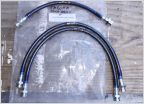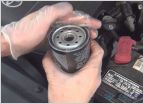-
Welcome to Tacoma World!
You are currently viewing as a guest! To get full-access, you need to register for a FREE account.
As a registered member, you’ll be able to:- Participate in all Tacoma discussion topics
- Communicate privately with other Tacoma owners from around the world
- Post your own photos in our Members Gallery
- Access all special features of the site
2009 TRD Sport Bedcage Shock Mounting
Discussion in '2nd Gen. Tacomas (2005-2015)' started by Gucci Chanclas, May 25, 2021.


 Thermostat
Thermostat Stainless Steel Flexible Brake Lines
Stainless Steel Flexible Brake Lines Looking at doing my first oil change on 2015 4.0 V6
Looking at doing my first oil change on 2015 4.0 V6 Are there something wrong with my tires? please help
Are there something wrong with my tires? please help











































































